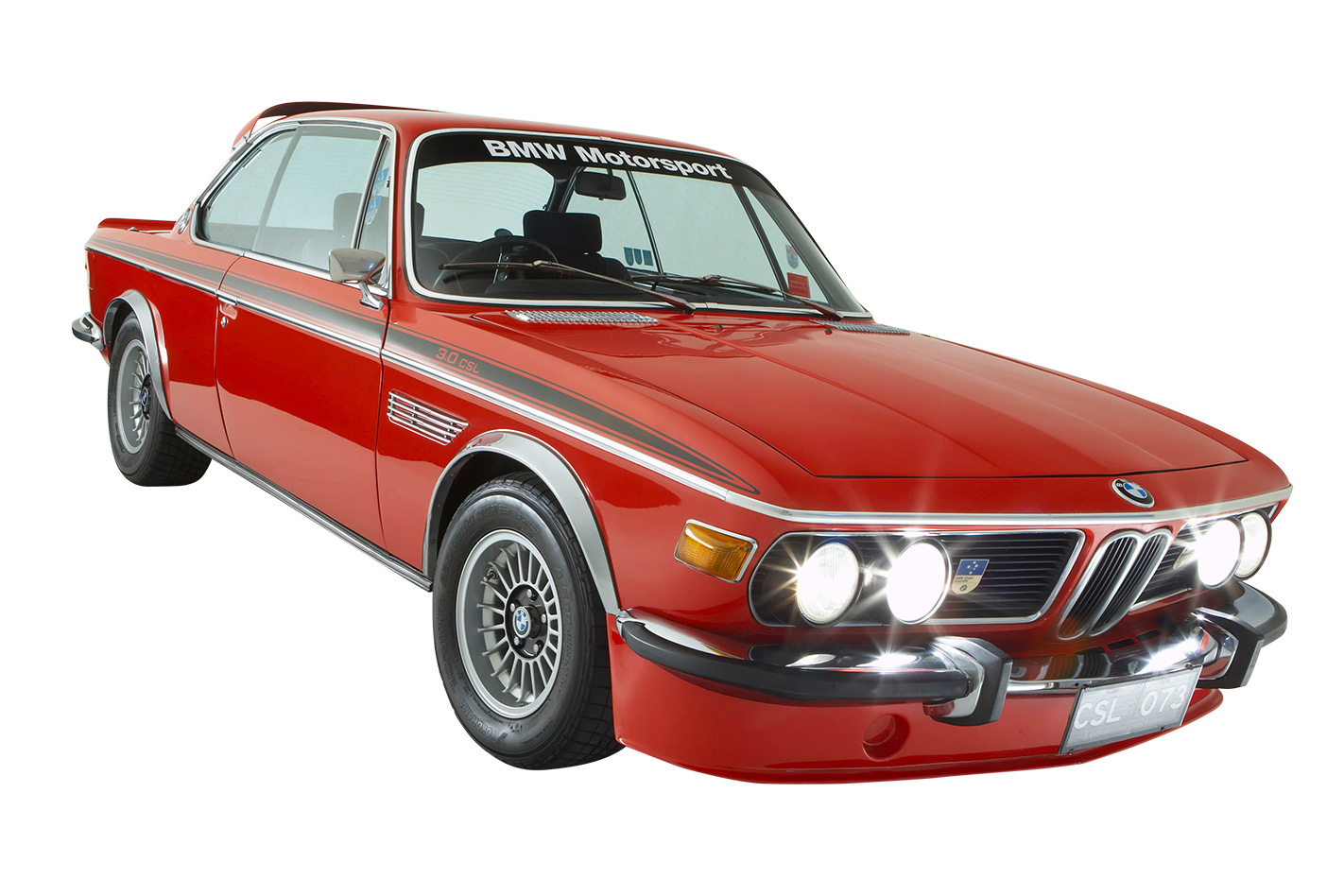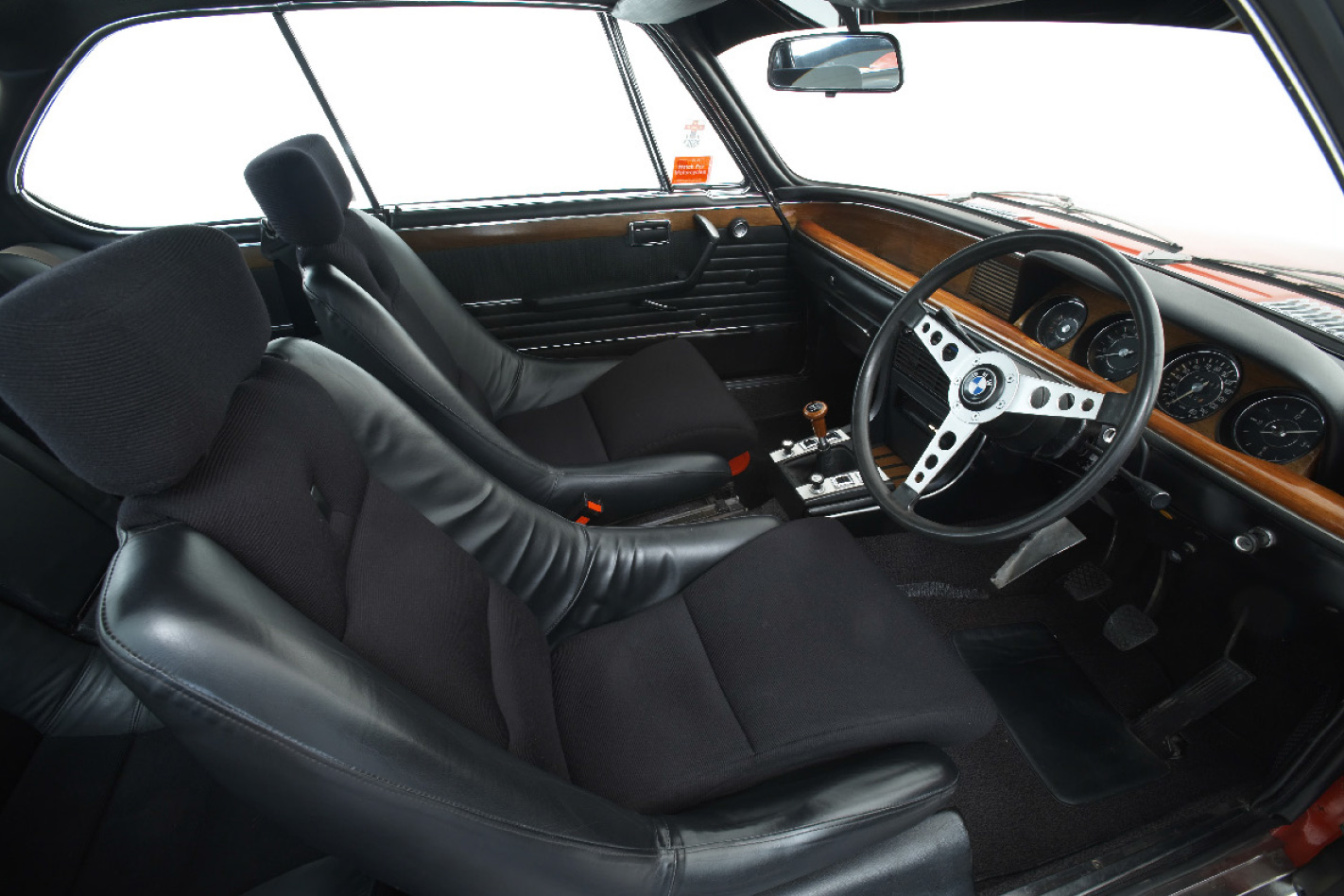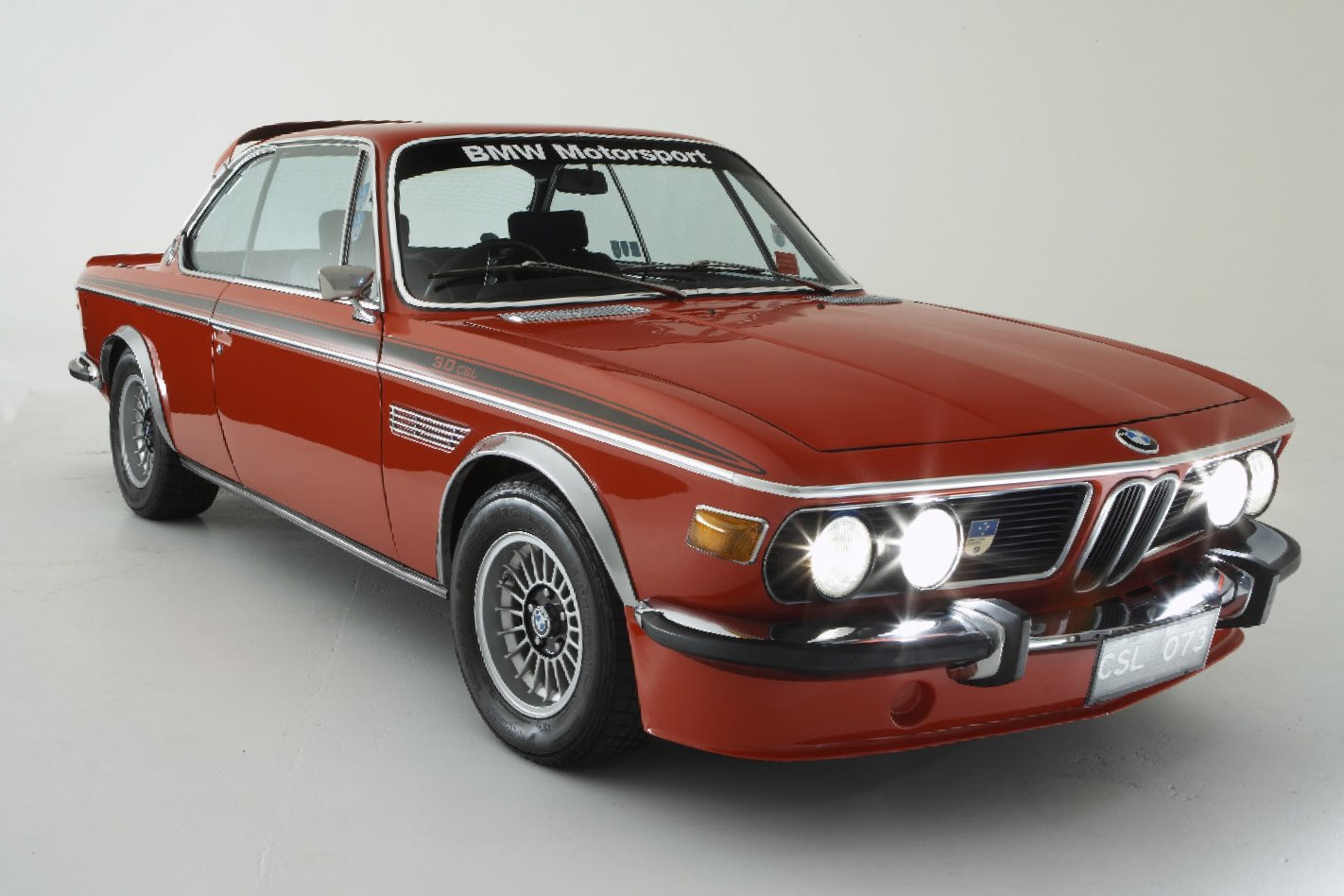WHEN you look at the current crop of BMWs, ‘elegant’ is not the first word you come up with.
This feature was first published in MOTOR magazine’s July 2009 issue.
‘Imposing’, sure. ‘Aggressive’, yep. ‘Taut’, even. But ‘svelte’, ‘dainty’ and ‘elegant’? Er, maybe not. Wasn’t always that way; in the late ’60s and early ’70s, BMW hit a stylistic highpoint with its E9 coupe. Broadly based on the 2000CS of 1965, but with a stretched wheelbase to house the six-cylinder engines of the E3 sedan line-up that debuted in 1968, the two-door version took elegance to the streets.

The main event, however, was the big banger in CSi trim with alloy wheels and the 3.0-litre version of BMW’s celebrated M30 overhead-cam straight six. But even then, BMW had something up its sleeve to tempt those for whom even a 3.0 CSi was not enough. And it was this car, the 3.0 CSL.
Translated simultaneously from both BM-speak and German, CSL stands for, simply, ‘Coupe, Sport, Light’. By now you’re looking at these pics and wondering where the hell the huge rear wing that earned the car the ‘Batmobile’ tag (yep, years before the Walkinshaw VL borrowed the same name) has disappeared to.

In fact, the CSL dominated the sport for about a decade, winning multiple championships. Which was kind of the point of the whole exercise, because the CSL was a homologation special to give BMW a leg-up into tin-top racing in the 1970s.
You could also argue, if you look at the car from another angle, that the 3.0 CSL was really the first of the M-cars to emerge from BMW’s skunkworks. No, it doesn’t have an M badge on it anywhere, but the CSL did make use of the blue-purple-and-red graphics (in some markets) and if this ain’t the spiritual grand-daddy of the M3 (which has also been available in CSL trim at various times, too, remember) then we’ll eat our Akubras.
But under the paint, the CSL has a few more secrets to surrender. For starters, the bonnet, doors and bootlid are made from aluminium rather than steel in order to get the weighbridge ticket down. And BMW didn’t stop there. As well as the alloy bits, the body parts that remained steel were stamped out of extra-thin stuff.

The result was a car that tipped the scales at about 1150kg with fuel in its tank and air in its tyres. Funny thing was, there suddenly emerged a group of buyers who wanted the sharp, racy looks of the CSL but with some of the luxury built back in.
So, many a CSL (particularly those destined for the US) were fitted with what BMW called a City Pack, which put back the glass windows, some of the sound proofing and luxury gear but kept the aluminium panels and the feel of the interior. Weight of the car with the City Pack jumped to about 1270kg, so the non-City CSL is the purest, uncut fix you can get now.
Powering the CSL was a tuned version of the M30 six that stuck with the single overhead cam and two valves per cylinder, but ditched the CS’s twin-carburettors for the CSi’s electronic fuel injection.

If that figure was inaccurate in any way, it was probably pessimistic, but the bottom line is that the CSL – even with a four-speed manual (a five-speed was homologated for a handful of late-build cars) – was a devastating performer compared with other road cars of its time. And in race trim, it was even cooler.
According to what rules you were running under, BMW offered two monsters: a 3.2-litre 253kW version as well as a mighty 3.5-litre model with a mind-bending 322kW at the flywheel. It’s no wonder they became the scourge of anything else battling to win a touring-car race at the time.
These days, a BMW of this era will fall into one of two categories. They’ll either be pristine thanks to an expensive restoration process or they’ll be junkers with rusty panels and smoky engines. Fortunately, the CSL’s reputation and racing pedigree has meant that the same fate hasn’t befallen it, so most still around are thankfully from the former camp.

A few rattles from the interior are nothing to get worked up about, but a cracked, split dashboard and tatty seats will bring values down quick smart. The nice thing about an older car like this is that everything is rebuildable or replaceable.
There weren’t a lot of plastic parts to start with and most of the mechanical components are fixable and not necessarily throw-aways as they often can be in newer designs. A car like the CSL won’t be too practical as a day-to-day proposition, thanks to the lack of power steering and what-not, but its delicate alloy panels are too nice to leave parked at the supermarket anyway.
And its rarity and prestige would only have a fool driving such a legendary machine as a daily driver. Besides, that’s what its grandson, the M3, is for, right? Now there’s a tasty fantasy garage…
The good 1. Visual Appeal – Is there a prettier coupe (apart from a 911, of course) from the same era? We can’t think of it. The CSL oozes style and epitomises ’70s touring-car racing. 2. Heritage – It’s the cave-dwelling grandad of every M-car that’s ever made you drool. Racing heritage never hurts: it will always be worth something as it is now a bona-fide collectible. 3. Driveability – The CSL is still a damn good thing to get out of the shed and drive, despite that fact that four decades have passed under its alloy wheels. And cars are made to be driven.
The bad 1. Body Issues – European (and thin) metal means you may end up chasing your tail with rust if you buy the wrong car. Aluminum panels mean you must be careful when you park. 2. Common Engine Woes – Check original engines for head gasket dramas and be aware that old-school fuel injection will never be as smooth or fuss-free as modern electronic stuff. 3. Time Warp – The CSL had already been around a decade before a 26-year-old in 2009. So your kids will probably get it, but their kids may not. But don’t let that put you off for a second.
WHERE DO I GET ONE?
Most CSLs were sold in either Europe or the US and not here. Finding one at all may be seriously difficult. Don’t be put off by left-hand-drive because they’re old enough to be legally registered without converting them.
Secondly, there simply weren’t that many built: depending on who you talk to, just 765 Batmobiles were made and, of those, only a small number were real-deal, no-City-Pack cars. Then again, we’d cop the City Pack if it was the difference between owning a CSL and not.
The other spanner in the works is that a high percentage of Batmobiles were raced, and if there’s one thing that kills off a breed fast, it’s the rough and tumble of touring-car racing. Again, a non-raced example would be nice, but we wouldn’t turn our noses up at an ex-racer returned to the street.





